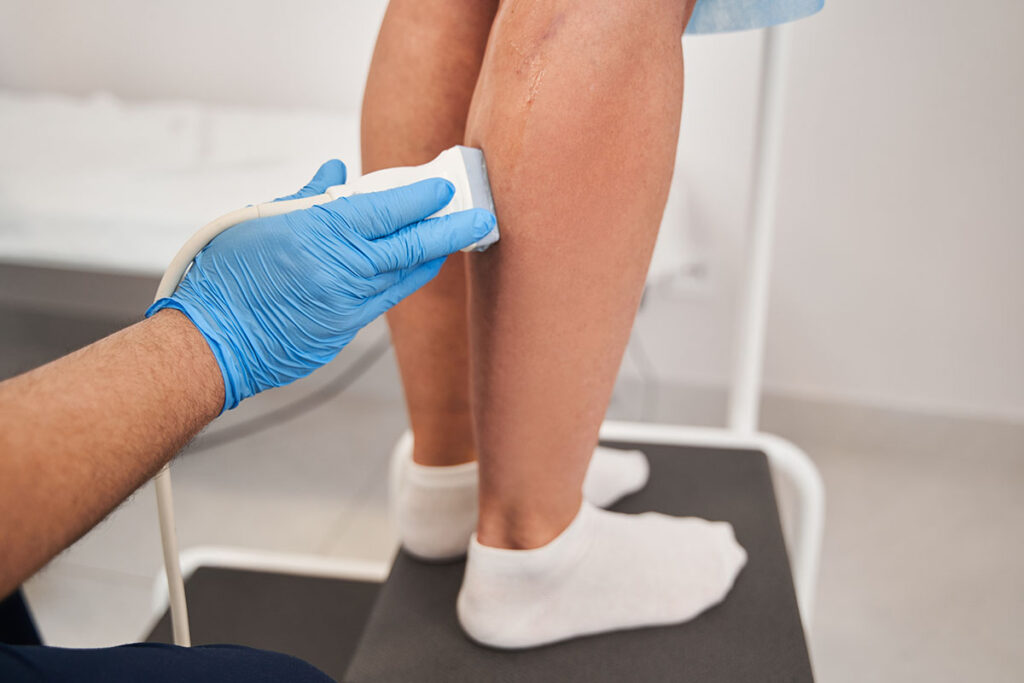How is CVD Diagnosed?
Patients who present with the risk factors, as well as, signs & symptoms should be referred to a vein specialist who is experienced in treating venous reflux disease for proper evaluation, testing and diagnosis.24 The Society for Vascular Surgery/American Venous Forum (SVS/AVF) clinical practice guidelines recommended that the evaluation of reflux with duplex ultrasound be performed with the patient standing whenever possible. A sitting or reverse Trendelenburg position can be used if the patient cannot stand.22
An ultrasound study will be performed to accurately diagnose venous reflux disease.

What You Need To Know
CVD is a progressive disorder, the good news is that the disease is common and treatable. Once CVD has been diagnosed, you will then be able to put together a comprehensive medical treatment plan for patients to help them better manage their symptoms. While conservative treatment, like compression stockings, can play a role, it may only offer temporary relief. It’s important to consider other minimally invasive therapies available for patients on their CVD journey. Discover if the Venclose™ Catheter Procedures may be the right treatment for your patients!

